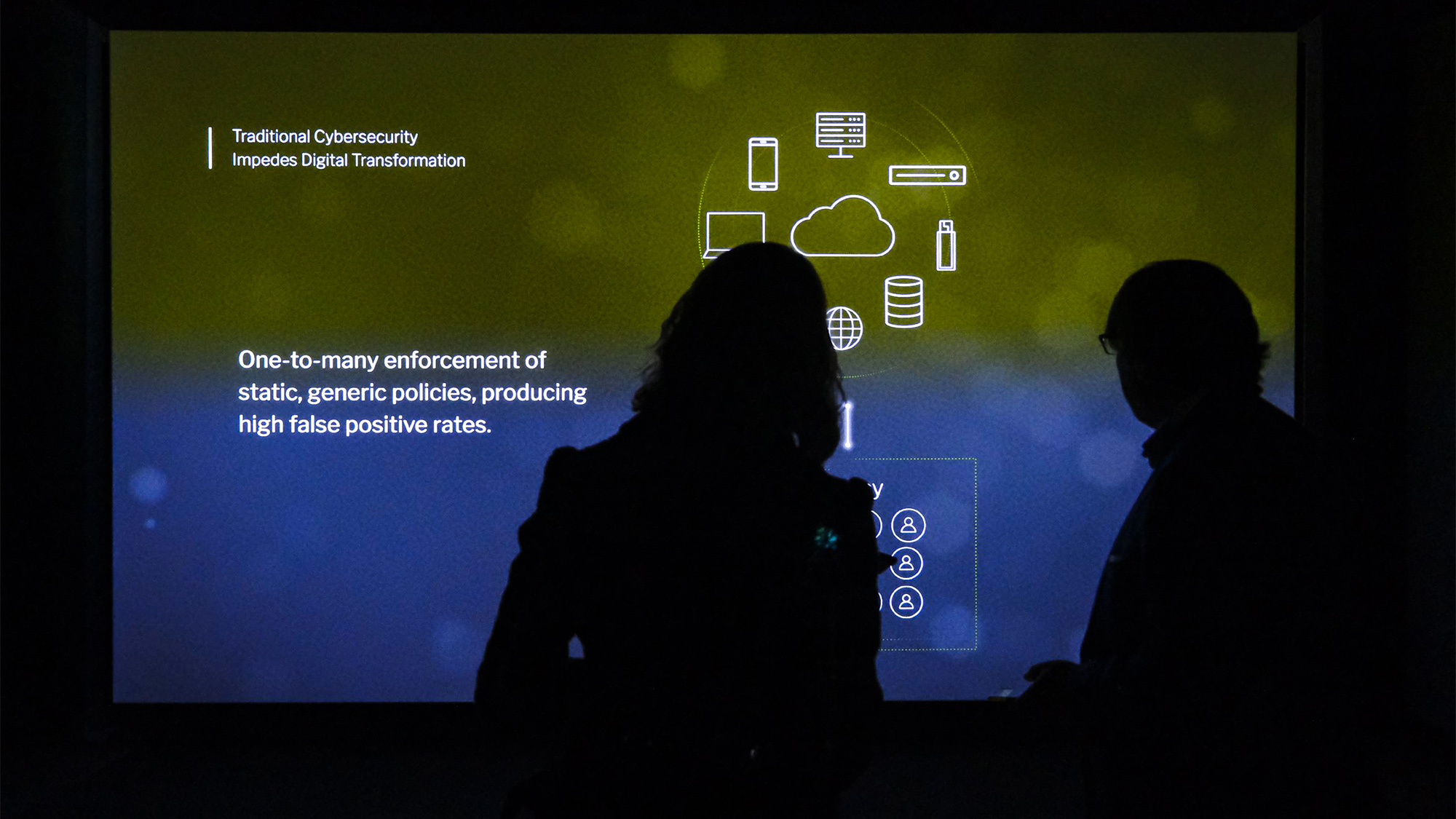With Face-to-Face Meetings Sidelined, What’s Next for Experience Centers?
November 06, 2020 | By Molly Murphy and Michael Schneider
Experience centers — often referred to as sales, innovation, customer, or briefing centers — are a catalyst for developing and fostering a deep connection between an audience and a brand. Like many businesses around the world, customer experience centers have closed their doors as we wait for safer times to travel and collaborate in person.
Although travel has diminished and large gatherings are on hold, the need for companies to engage existing and potential customers and their respective partners in a unique setting remains. In fact, we believe the need to think outside the norm, to work together, and to innovate during this unusual time is more valuable than ever. According to a Gensler U.S. Workplace Survey, workplaces with innovation hubs deliver 16-24% higher effectiveness and experience scores, demonstrating that their investment and success improves how we work. Experience centers are a space to help understand and inform our reimagined future.
At Gensler, we are asking critical questions to understand how experience centers can not only operate but thrive during this time of limited travel and infrequent face-to-face interactions. In what ways can we take advantage of this moment of accelerated technology adoption to uncover solutions for how we continue to collaborate, engage, and innovate? Additionally, how can we reimagine the relationship between the participant and the experience center?
The Virtual Venue
In the immediate future, experience centers need to adapt rapidly to regain their purpose. Previous investments in content and experience design do not need to go to waste and can instead be transformed within a new virtual venue. A virtual space does, however, present several new challenges. We are identifying and solving these challenges so that our client’s experience centers remain relevant, useful, and even more impactful.

- Creating a World-Apart Experience
One of the basic needs of experience centers is to provide a change of scenery that helps transition participants away from the distractions of everyday life into a creative state of mind. It is critical to create dynamic environments where guests can explore information in ways that do not resemble a website interface or remote presentation. With cybersecurity firm Forcepoint, we created an immersive experience center in Boston that demonstrates their human and behavior-centric approach to their work. A series of layered, translucent panels, which become the backdrop for a sequence of voiced-over data visualizations and an interactive activity, take the visitor through distinct touchpoints focused on the intersection of people and data.
- Developing an Immersive Learning and Engaging Environment
A variety of tactile technologies and storytelling formats are often used to create impactful experiences. We are considering ways to deepen engagement for remote participants who are unable to have a sensory experience as they might in an experience center. For example, gamification can create new methods of collaboration through the concepts of backstories and guided journeys, multiplayer modes, and challenges.

- Creating Shared Experiences
The ability to explore a space and learn something new together can be challenging in a remote environment. We are developing tools and virtual environments focused on unique shared experiences. For one client, we are incorporating video and messaging platforms directly into a digital site so groups can explore content together without the latency pains often felt in standard video conferencing solutions.
- Enhancing Personalization
This can come in the form of always-on, personalized virtual spaces for specific clients or groups found in gaming and collaborative platforms like Slack and Miro. Mailing unique packages to guests offers something memorable to accompany their experience as well, seen frequently in technology launch unboxings or the branding experience with ticket packaging to events or festivals.
- Enabling Spontaneous Connections
Meaningful connections that develop into long-term relationships often happen in-between scheduled events at a physical experience center. We are affecting new forms of spontaneous interactions, despite the distance, to strengthen connections before, during, and after sessions through reimagined workshop formats, pre-meeting content and icebreakers, and follow-on sessions.
We are currently designing for a hybrid experience environment where mixed remote and in-person groups necessitate new practices and collaboration tools. While we are helping our clients take their current experience centers and map it to a new virtual medium, we are also using this time as an opportunity to redefine what the experience center of the future needs to deliver for their businesses. Beyond the pandemic, experience centers will continue to be a space for exploring new ideas, facilitating critical relationships, driving businesses forward, and storytelling.
A special thanks to Amanda Ramos, Nick Hubbard, Christian Bannister, David Buivid, and Jesus Garcia Galvez for contributing insights to this article.

